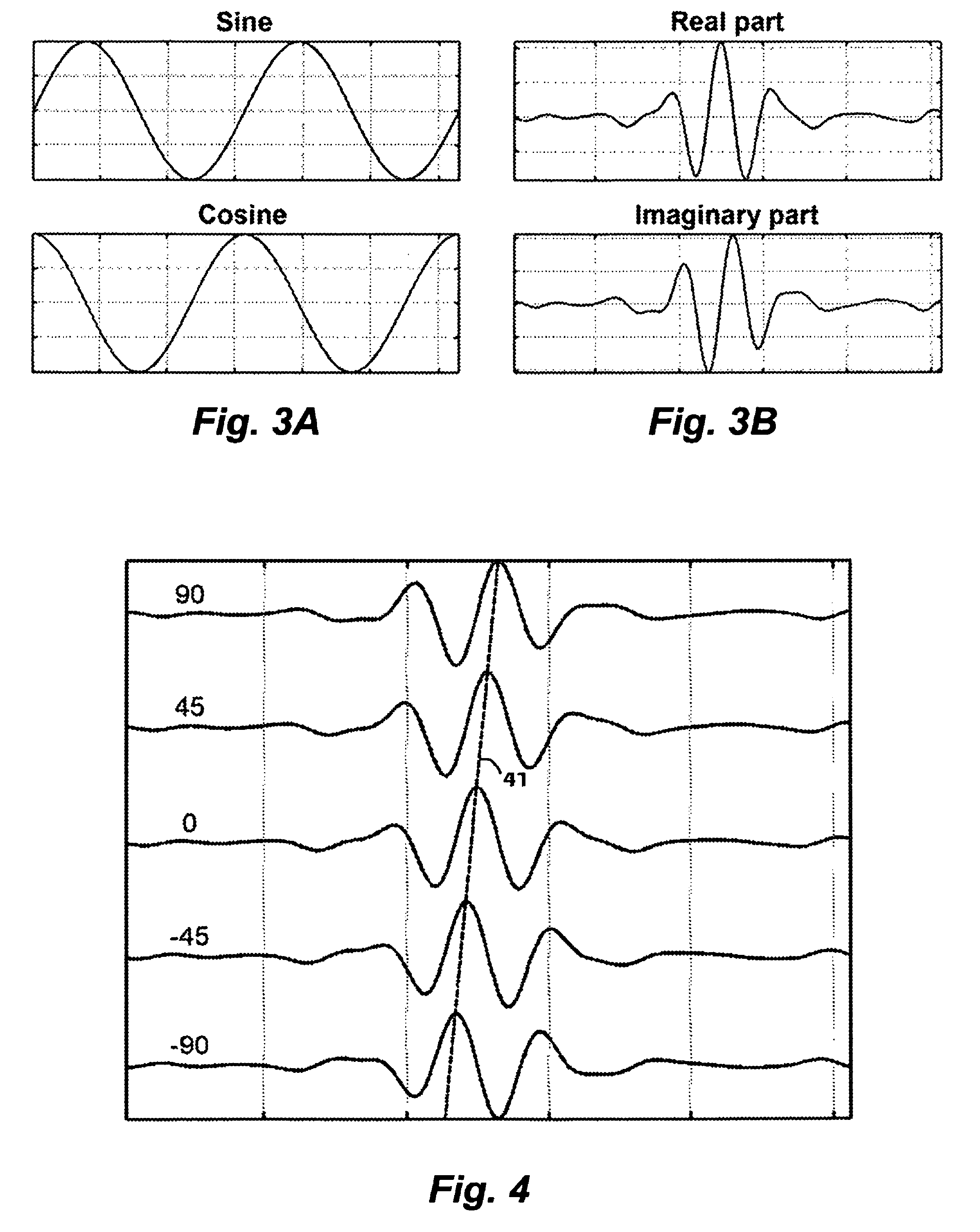Method to adapt a template dataset to a target dataset by using curvelet representations
- Summary
- Abstract
- Description
- Claims
- Application Information
AI Technical Summary
Benefits of technology
Problems solved by technology
Method used
Image
Examples
examples
[0115]FIGS. 7A-D illustrate the results obtained by using the present inventive method to attenuate the noise patterns in two predicted templates (FIGS. 7B and 7C) from a target dataset (FIG. 7A). The noise in the target cannot be attenuated by straightforward subtraction of the templates because the predicted noise patterns contain spatially and temporally varying errors. FIG. 7D illustrates the result obtained by first adapting the two template datasets to the target dataset (as described in FIG. 6) by using the complex curvelet transform, and then subtracting the adapted templates from the target. As illustrated, the adaptive subtraction removes the template patterns with minimal damage to the underlying signal.
PUM
 Login to View More
Login to View More Abstract
Description
Claims
Application Information
 Login to View More
Login to View More - R&D
- Intellectual Property
- Life Sciences
- Materials
- Tech Scout
- Unparalleled Data Quality
- Higher Quality Content
- 60% Fewer Hallucinations
Browse by: Latest US Patents, China's latest patents, Technical Efficacy Thesaurus, Application Domain, Technology Topic, Popular Technical Reports.
© 2025 PatSnap. All rights reserved.Legal|Privacy policy|Modern Slavery Act Transparency Statement|Sitemap|About US| Contact US: help@patsnap.com



